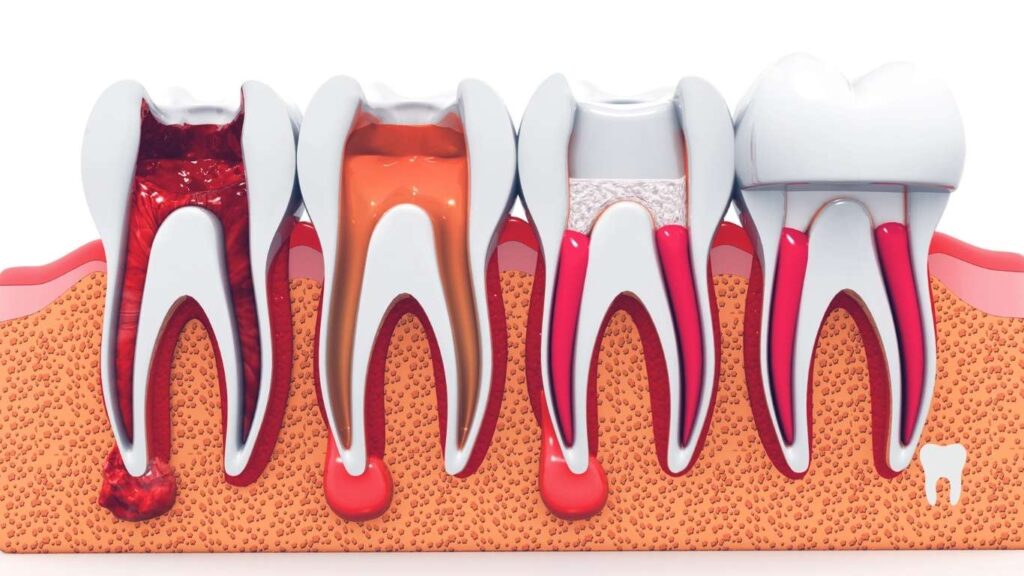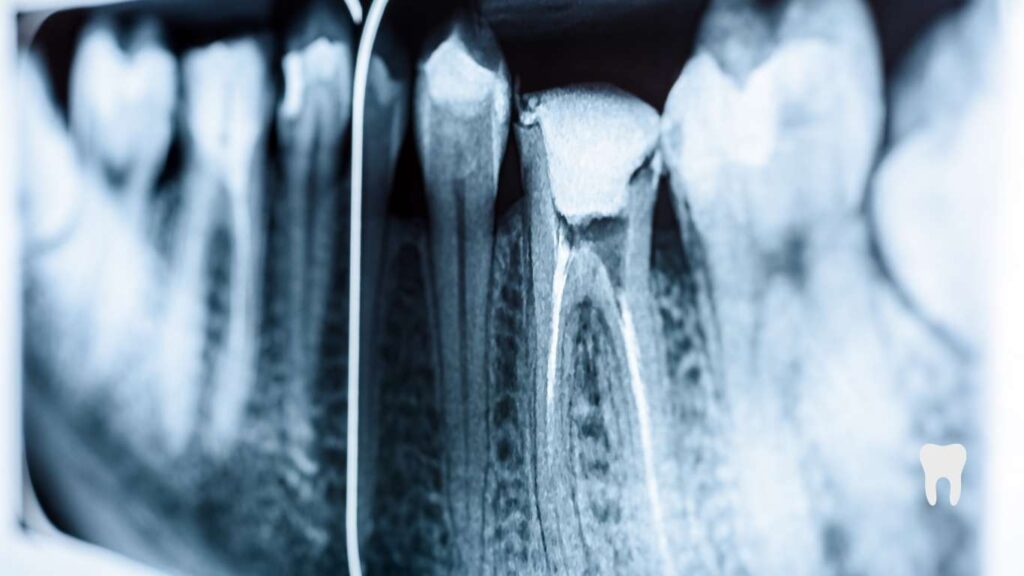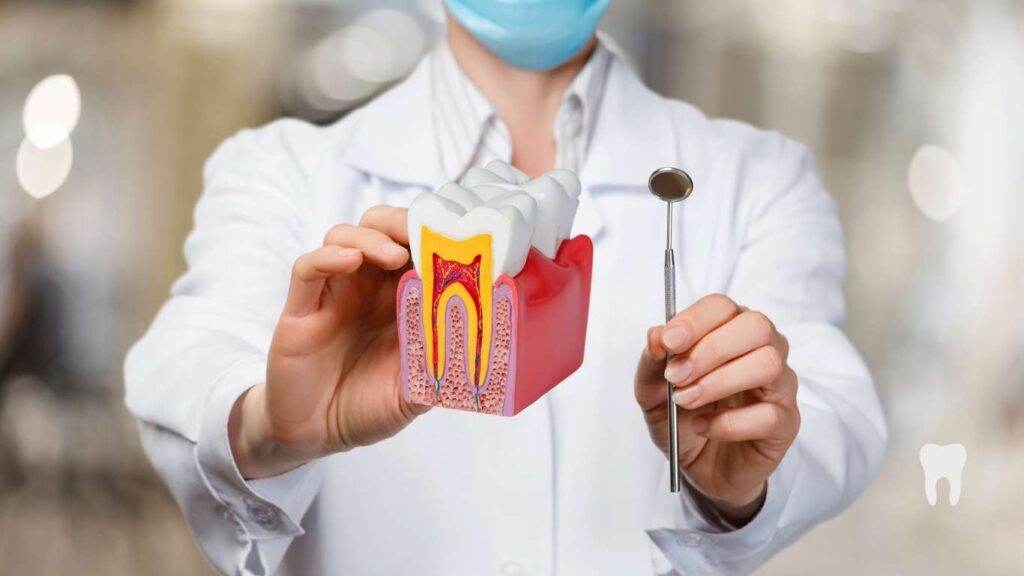When you’re facing a root canal, one of the first questions on your mind is: how long does a root canal take? Whether you’re dreading a long dental chair session or simply want to plan your schedule, it helps to understand the root canal timeline—from diagnosis to full recovery.
In this article, you’ll get a step-by-step breakdown of each stage, factors that affect timing, and tips to recover quickly.
Table of Contents
What Is a Root Canal—and Why Does It Take Time?

A root canal (or endodontic treatment) is a procedure to remove infected or inflamed pulp from inside a tooth, disinfect the canals, fill and seal them, and then restore the tooth structure.
Because teeth vary in complexity, canals can run in curved paths, have branches or extra canals, or be obstructed by calcifications. All of that adds to the time needed.
Many sources report average duration of 30 to 90 minutes for a relatively straightforward root canal. Some more complex cases, especially molars with multiple roots, can take 90 minutes or more or even require multiple visits.
In sum: Root canal time is not a fixed number—but with the right expectations, you’ll know what to look for.
Typical Breakdown: Root Canal Timeline (Step by Step)

Below is a more detailed look at what you’ll go through, and how long each step often takes. Think of this as your “how long does a root canal take?” roadmap.
| Stage | What Happens | Approximate Time | Notes / Variations |
|---|---|---|---|
| Consultation & Diagnosis | X-rays, check symptoms, confirm which tooth needs RCT | 15–30 minutes | Sometimes done on a prior visit or combined with treatment day |
| Anesthesia & Numbing | Local anesthetic to numb the tooth’s nerve | 5–15 minutes | Getting adequate numbness is critical; in inflamed teeth it may take a bit more time |
| Isolation (Dental Dam Placement) | A rubber dam (sheet) isolates the tooth to keep it dry | 5–10 minutes | This step ensures a clean environment and prevents contamination |
| Access / Opening the Tooth | Drilling a small opening through the crown to reach the pulp chamber | 10–20 minutes | Depends on tooth position, previous restorations, or blockages |
| Cleaning, Removing Pulp & Shaping Canals | Remove infected tissue, disinfect, manually or mechanically shape canals | 30–60+ minutes | Biggest variable—depends on number, shape, curvature of canals, presence of infection |
| Filling / Obturating the Canals | Filling canals with gutta-percha or biocompatible material, sealing them | 15–40 minutes | Precision is key to prevent leakage or re-infection |
| Temporary Filling / Sealing the Access | Close the access hole if restoration (crown) is done later | 5–10 minutes | If permanent restoration can’t be placed immediately |
| Post-Procedure Instructions / Recovery Time in Office | Instructions, observation until numbness wears off | 10–20 minutes | Dentist ensures you are comfortable before leaving |
| Follow-up / Restoration Appointment | Remove temporary filling, place permanent filling or crown | 30–60 minutes | Often done days or weeks later depending on case |
| Total Chair Time (on treatment day) | — | 60–90+ minutes (depending on complexity) | Some simple teeth may be completed in under an hour |
Let’s dive deeper into each:
1. Consultation & Diagnosis (15–30 minutes)
Before any work begins, your dentist or endodontist will:
- Take digital X-rays (or sometimes CBCT scans) to view the internal anatomy
- Evaluate symptoms such as pain, sensitivity, swelling
- Perform tests (cold/hot, percussion, electric pulp testing)
- Decide whether a root canal is necessary and map the treatment plan
If this is done on a separate visit, you’ll have more flexibility the day of the procedure. In some cases, diagnosis and treatment are combined into one appointment to save time.
2. Anesthesia & Numbing (5–15 minutes)
Getting truly numb is essential for your comfort. The dentist will inject a local anesthetic (often lidocaine) to numb the tooth and surrounding tissues.
In inflamed or infected teeth, achieving deep anesthesia can sometimes take longer or require supplementary injections. They will not proceed until you feel no pain or sensitivity.
3. Isolation (5–10 minutes)
A dental dam (rubber sheet) is placed to isolate the tooth from saliva, moisture, and bacteria, ensuring the working area stays clean. It also protects your airway from accidental swallowing or inhalation of small instruments.
This step is simple but crucial, and a skilled dentist or endodontist usually does it fast.
4. Access Opening (10–20 minutes)
Next, the dentist drills a small access hole through the crown to reach the pulp chamber and root canals. The duration depends on:
- Location of the tooth (front teeth are easier; molars more challenging)
- Existing restorations, crowns, or fillings
- Thickness of enamel and dentin
In many cases, 10 to 20 minutes is sufficient.
5. Cleaning, Removal, Disinfection & Shaping (30–60+ minutes)
This is the most time-intensive and technically demanding stage. It involves:
- Removing the infected or dead pulp tissue
- Irrigating canals with disinfectants (sodium hypochlorite, EDTA, etc.)
- Mechanically shaping the canals using hand or rotary files
- Checking and rechecking with trial instruments and possibly with X-rays
The time depends heavily on:
- Number of canals (front teeth: 1 canal; premolars: 1–2; molars: 2–4 or more)
- Canal curvature, calcifications or blockages
- Extent of infection and inflammation
- Anatomy complexity (branches, accessory canals)
So while many sources quote 30 to 60 minutes, in complex cases this stage alone can take much longer.
If the canals are very curved or blocked, or if retreatment is needed, this step might be extended or require more specialized tools.
6. Filling / Obturation (15–40 minutes)
Once the canals are cleaned and shaped, they are filled with a biocompatible material (commonly gutta-percha) and sealed with a cement. The goal is to prevent bacteria from re-entering.
Ensuring a good seal requires precision, possible adjustments, and possibly verification with X-rays. This step typically takes 15 to 40 minutes.
7. Temporary Filling / Sealing (5–10 minutes)
If the tooth is not going to receive its permanent crown or final restoration immediately, a temporary filling is placed to seal the access hole. This step is quick.
8. Post-Procedure Instructions & Recovery Time in Office (10–20 minutes)
After the technical steps, the dentist will:
- Make sure you are comfortable
- Give you post-op instructions (diet, hygiene, pain control)
- Monitor briefly until numbness wears off
This “cool-down” period usually takes 10 to 20 minutes.
9. Follow-up / Restoration Appointment (30–60 minutes)
In many cases, a separate visit is needed to:
- Remove the temporary filling
- Place a permanent restoration (filling, onlay, or crown)
- Final x-rays and adjustments
This appointment often takes about 30–60 minutes. Depending on case complexity, it may be scheduled a few days to a few weeks later.
Total Chair Time on Treatment Day
Combining all the above, a typical root canal appointment lasts 60 to 90 minutes, though simple front-tooth cases may finish in under an hour, and complex molars may stretch beyond 90 minutes.
If the dentist must split the procedure across two visits (for example, to place medication or allow inflammation to subside), your total time will extend accordingly.
Single-Visit vs. Multi-Visit Root Canals
One question many people have: can the entire root canal be done in one visit? The answer: sometimes yes, sometimes no.
When a single-visit root canal is possible:
- The infection is moderate (not severe abscess)
- Tooth anatomy is relatively straightforward
- Patient cooperation and good isolation
- No complicating factors (blockages, severe curvature)
Many modern practices aim for single visits because it saves time and reduces risk of contamination between appointments.
When multiple visits are preferred:
- Severe infection or abscess needing medicament to reduce bacteria
- Complex canal anatomy or difficult access
- The dentist wants to ensure complete disinfection before obturation
- When placing a final crown or restoration at a later stage
- If the patient’s health or tolerance for a long session is a concern
In multi-visit cases, the first visit typically handles cleaning and placing medication; the later visit completes filling, sealing, and restoration.
According to Healthline, root canal treatment can take from 90 minutes to 3 hours depending on how many sessions are needed.
What Affects the Duration? (Key Variables)

When comparing your case to “60 minutes,” remember: many factors influence how long your root canal will take. Here are the major ones:
- Tooth Type & Location
- Front (incisors, canines): usually one canal, simpler anatomy → faster
- Premolars: 1–2 canals, moderate difficulty
- Molars (back teeth): 2–4 canals, often curved and complex → longer time
- Canal Complexity
- Curvatures, accessory canals, blockages or calcifications
- Previous restorations or retreatments
- Narrow or sclerosed canals
- Extent & Severity of Infection
- Teeth with active infection or abscess may need extra disinfection time or multiple visits
- Inflamed tissues may slow down anesthesia uptake
- Accessibility & Existing Restorations
- Crowns, posts, or bridges may need removal or extra steps
- Deep or hard-to-reach teeth (e.g., wisdom teeth)
- Dentist / Endodontist Skill & Technology
- Use of magnification, microscopes, rotary instrumentation, CBCT imaging can speed up precision work
- Experience reduces fumbling or delays
- Patient Factors
- Mouth opening, gag reflex, general health
- Anxiety or movement may require breaks
- Need for Interim Medication
- If placing antibiotic or antibacterial medicaments inside canals, may require waiting time between visits
- Restoration Timing
- If the final crown cannot be placed same day, a temporary restoration is used, and scheduling impacts time
Given all these variables, the “how long does a root canal take?” question can only be answered precisely after a thorough diagnosis.
Recovery Timeline & Post-Treatment Expectations

Knowing how long the root canal appointment might last is only half the picture—how soon will you feel “normal” again? Here’s what to expect in recovery.
Immediate Hours After Procedure
- Numbness will remain for 2–4 hours (avoid chewing or biting until it wears off)
- Some mild soreness or sensitivity in surrounding tissues is normal
- Avoid chewing on the treatment side until permanent restoration is placed
First Few Days (1–3 days)
- Discomfort should gradually subside
- Over-the-counter pain relievers (ibuprofen, acetaminophen) typically suffice
- Stick to soft foods, avoid very hot, cold or crunchy items
- Gentle brushing and flossing—be careful around the treated tooth
1 Week to 10 Days
- Most sensitivity and discomfort resolves
- If molars were treated, full comfort may take longer (7–10 days in some cases)
- If soreness persists beyond a week, contact your dentist
Long-Term Healing & Success
- The treated tooth can last many years—often a lifetime—with good maintenance
- Follow-up x-rays may be taken months later to ensure no reinfection
- Once the crown or permanent restoration is placed, the tooth regains full function
According to Cleveland Clinic, most people recover in less than a week, with lingering sensitivity gradually fading.
Quick tip: The pain before the root canal is often worse than after. Modern anesthesia and techniques make the procedure tolerable.
Sample Timelines for Different Tooth Types (Hypothetical Cases)
To give you a more concrete feel, here are a few hypothetical examples of how long a root canal might take in different scenarios:
- Front incisor (single canal, minimal damage)
→ 50 to 70 minutes total, completed in one visit - Premolar with two canals and moderate curvature
→ ~80 to 100 minutes, possibly two visits - Molar with three or more canals, complicated anatomy
→ 100 to 140+ minutes, likely two visits
Of course, every case is unique. Always treat such estimates as guidelines rather than guarantees.
FAQs: How Long Does a Root Canal Take?
Is a root canal painful?
Thanks to local anesthesia, the procedure itself should not hurt. You may feel pressure, but not pain. Post-treatment discomfort is typically mild to moderate and temporary.
Why would a root canal take multiple appointments?
If the infection is severe, or if the canals are difficult to access, the dentist may insert medication and let the tooth rest before completing the treatment later.
Can the crown be placed on the same visit?
In some modern setups with same-day crown fabrication, yes—but often, the crown has to wait until after healing and final evaluation.
How long will I be in the dentist’s chair?
Expect to spend 60 to 90 minutes for a standard root canal. However, simpler front teeth may take less, and complex molars more.
When can I chew normally again?
Once the permanent restoration (crown or filling) is in place, you’ll usually be able to chew normally. Until then, avoid heavy chewing on that side.
Tips to Help Your Root Canal Go Smoothly (and Save Time)
- Choose an experienced endodontist (or dentist skilled in root canals). Their expertise often reduces delays.
- Get advanced imaging (e.g. CBCT) to map canal anatomy ahead of time.
- Go in with good oral hygiene so there’s less need for cleaning before treatment.
- Follow your dentist’s instructions, avoid smoking, and maintain overall health to enhance healing.
- Communicate discomfort early—if anesthesia isn’t deep enough, telling the dentist can prevent interruptions.
- Avoid rescheduling or rushing—give the dentist enough time so they don’t have to cut corners.
Summary & Final Thoughts
- The question “how long does a root canal take?” doesn’t have a one-size-fits-all answer—but most treatments fall between 60 to 90 minutes for a standard tooth.
- Some simpler teeth finish in under an hour; complex molars may take longer or require multiple visits.
- The biggest time factors: tooth type, canal anatomy, severity of infection, access, and dentist skill.
- Recovery is usually quick—most discomfort resolves within a few days and full healing takes place over weeks.
-
 Travis Kelce Taylor Swift: The Story, The Spotlight & The Cultural Phenomenon
Travis Kelce Taylor Swift: The Story, The Spotlight & The Cultural Phenomenon -
 Beaconsoft Latest Tech Info: A Simple and Helpful Guide to Today’s Technology
Beaconsoft Latest Tech Info: A Simple and Helpful Guide to Today’s Technology -
 New Balance 550: The Ultimate 2025 Guide to the Sneaker Everyone Is Talking About
New Balance 550: The Ultimate 2025 Guide to the Sneaker Everyone Is Talking About -
 Shop Valentine’s Day Jellycat: The Ultimate 2025 Gift Guide for Cute, Cozy, and Unforgettable Surprises
Shop Valentine’s Day Jellycat: The Ultimate 2025 Gift Guide for Cute, Cozy, and Unforgettable Surprises -
 How to Become a Sage: A Real Life Journey Into Wisdom, Peace and Inner Strength
How to Become a Sage: A Real Life Journey Into Wisdom, Peace and Inner Strength

